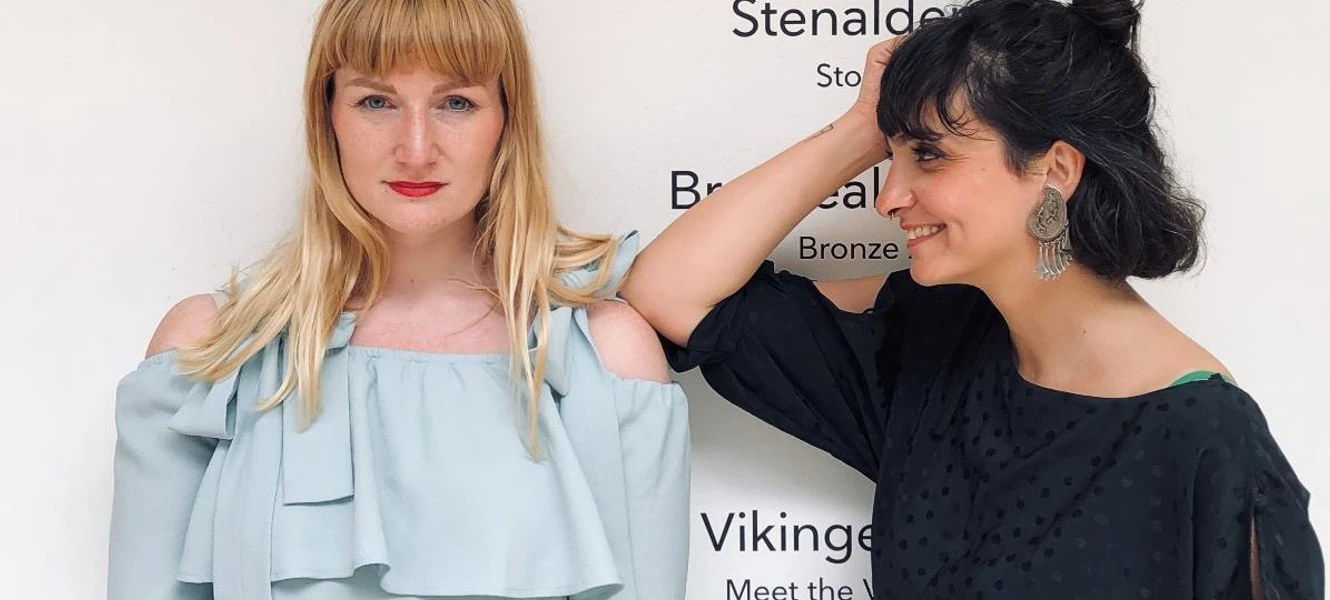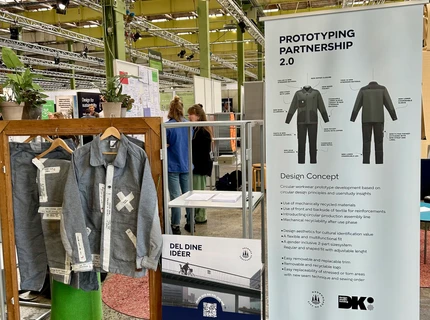
Textiles that talk
FABRIC focuses on refugee women and on clothing and craftsmanship as a means of communication. The exhibition opened Friday 11 March at Design School Kolding, just days after International Women’s Day, and as we witness the war in Ukraine escalate.
On display are works by textile artist Rezvan Farsijani and designer Solveig Søndergaard, who each have provided a creative space for refugee women to tell their stories through embroidery and textiles.
In the artwork, ‘Promise of Dawn’ (or ‘Dream House’), textile artist Rezvan Farsijani and her creative community of refugee women in Iran and in Paris have worked with layers, textile techniques, and transparency as a way of illustrating the cultural mesh of time and place that characterises women’s lives and in particular the reality of refugees. A tent of transparent fabric becomes an icon of family, safety, and domesticity, but also of the vanishing memories of lost homes, or of the imagined futures of better lives within one’s own home. With its soft walls and its instability, it references the temporary housing of refugee camps, yet with a poetic expression. It depicts the fragility of trying to build a new home while the ghostlike memory of the lost home is still present.
In Solveig Søndergaard’s artistic work ‘Stiching Stories’, Solveig and refugee and migrant women in Kolding, Denmark, made use of their own childhood memories and handed-down textile skills as an artistic trigger. Quite literally, the women were invited to do embroidery on family photos that were printed on transparent fabric, as a way of remembering, honouring, or giving new life to a lost history. The printed and embroidered photos display both the front sides of the embroidery as well as the back sides with knots, coarse stitches, and loose threads. The embroideries invite us to reflect upon both sides of our lives and memories of both happy days and difficulties.
In her opening speech, Rector Lene Tanggaard said that:
- Immediate safety is a priority, of course. But as human beings we need more than food, shelter, and clothes to feel whole. We need art, creativity, history. Even when we are at our most vulnerable, we need to be able to express ourselves and have a space where we can share our stories, activate our inner resources, and unfold our creativity. Recognizing clothing as a tactile, tangible, and visual means of communication, Rezvan, Solveig and The Fabric of My Life project have made this space available to refugee women by inviting them to co-create and use textiles to narrate their life stories.
The exhibition is open until 30 March during Design School Kolding’s regular opening hours. It is part of the cross-cultural project The Fabric of My Life.
Project partners:
The Centre for Textile Research at Copenhagen University, ARTEX - The Hellenic Centre for Research, Deutches Textilmuseum Krefeld, The National Museum of Denmark, Design School Kolding.


